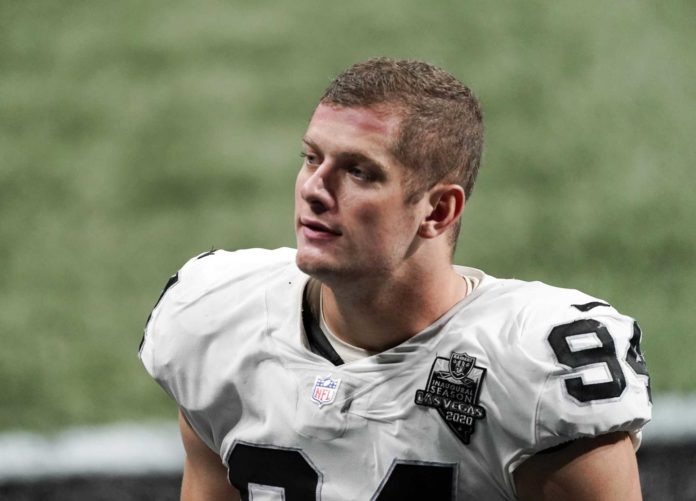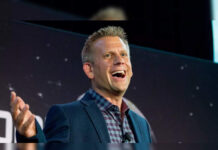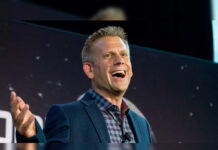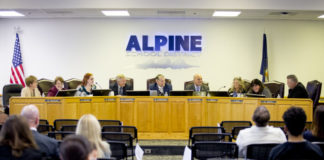
For the moment, Carl Nassib stands alone.
But I don’t think that will be the case for long.
Nassib, a Raiders defensive end, made big news last week with his casually Instagrammed, “Oh hey, by the way I’m gay” announcement. With his words, he became the only active out NFL player. As part of his statement, he pledged $100,000 to the Trevor Project, an organization that provides crisis intervention and suicide prevention services to LGBTQ young people.
While his revelation didn’t immediately cause other players to follow his lead out of closet, I’m sure there are plenty of gay NFL players who are watching his situation closely.
And pondering their own situation.
“Can I do that?”
“He made it look so easy.”
“He’s getting so much support.”
“What would it be like for me?”
Nassib turned conventional wisdom on its head. For years, people have wondered when and how a player in mainstream professional men’s team sports — football, baseball, basketball and hockey — would feel comfortable coming out. In 2014, Michael Sam came out before the NFL draft, was drafted by the Rams, but was cut before the season started. Since then, no one else has come out in the NFL.
Most believed such a step would need to come from a star, someone who was untouchable in terms of being shunned by his teammates or being released by his team. Many thought such a player would need to be on a team like the 49ers, in the gay-friendly Bay Area. Or that the player would need to be near the end of his career to be so brave and take such a risk, much like Jason Collins did for his final 22 games in the NBA in 2014.
But Nassib is a 28-year-old on his third NFL team. He was drafted in the third round by the Cleveland Browns after a great senior season at Penn State, where he had walked on to the team. He was waived in 2018 and claimed by Tampa Bay, where he started 17 games in two years. In March of 2020, he signed a three-year contract with the Raiders. Last season, he played five games and made 28 tackles.
To summarize: Not a star. Not near the end of his career. Not in the Bay Area. Just a courageous young man tired of hiding his truth.
The response to Nassib has been pretty awesome. The NFL released a statement of support and promised to match the donation to the Trevor Project. Vegas coach Jon Gruden and owner Mark Davis offered words of support, as did Raiders teammates such as Derek Carr. Other players from around the league tweeted out their support. Even the fictional Ted Lasso applauded Nassib on Twitter.
Nassib’s jersey became the top seller in the league in the days after his announcement. That’s more than just words of support; those babies go for $120 each.
All of that support resonates. Kids around the country who feel marginalized or bullied or scared are watching.
Are things changing from the days when homophobic slurs were routinely heard on the NFL practice field? From when players like former 49ers cornerback Chris Culliver make headlines during a Super Bowl week with anti-gay statements? From when the heavy presence in the locker room of the Fellowship of Christian Athletes, an organization with a history of anti-LGBTQ positions, would make coming out seem impossible? (Carr is one of many players involved in FCA).
At the very least, this generation of players is more accepting. They have grown up in a changing world where people in all walks of life feel increasingly comfortable to be their true selves, to be open about who they love, to legally marry who they love. Things that seemed impossible 15 years ago are now possible. Instead of demonization, for many young people there is acceptance.
The players are a different generation from many team owners and coaches. But that may be changing as well. At the very least, the NFL has learned that inclusion and acceptance is good for business. That their fans come in all shapes, sizes, colors, genders and identities. That being the sport of toxic masculinity may not be the best look in the 21st century.
Give credit to women’s sports for a lot of the change in attitudes. Thanks to female athletes who are increasingly open about their sexual identity, including some of the most popular athletes in the country, the public is more comfortable with athletes coming out, marrying someone of the same sex, being true to who they are.
“I thought we got to the point where this wasn’t” a story, Davis told the Las Vegas Review-Journal.
Not yet, Mark, but hopefully, some day. In men’s professional team sports, a gay player it is still a story, which is exactly why Nassib knew it was important to speak his truth.
“I’m not doing this for attention,” he said on his Instagram post. “I just think that representation and visibility are so important. I actually hope that one day, videos like this and the whole coming out process are not necessary. But until then I will do my best and my part to cultivate a culture that’s accepting and compassionate.”
He’s doing his part. And around the league others are asking themselves, “Is it time to do mine?”
Ann Killion is a San Francisco Chronicle columnist. Email: akillion@sfchronicle.com Twitter: @annkillion









